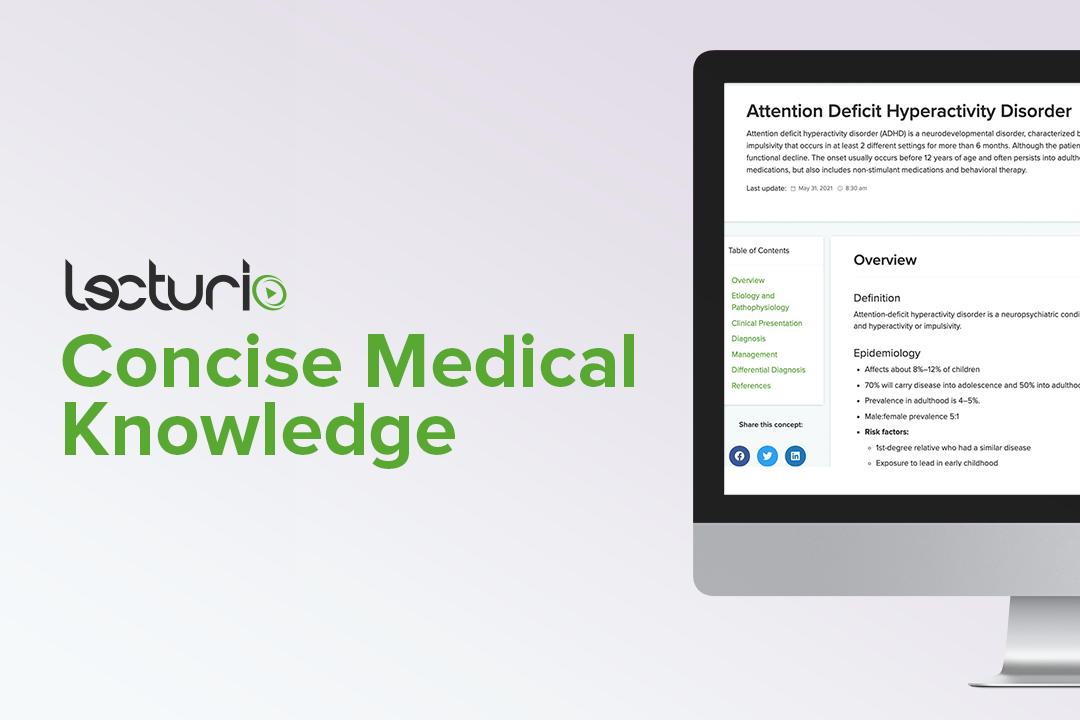Playlist
Show Playlist
Hide Playlist
ADHD in Pediatrics: Diagnosis
-
Slides ADHD Pediatrics V2.pdf
-
Download Lecture Overview
00:01 When you see a patient with a potential attention deficit hyperactivity disorder, it’s important to do a complete H&P. 00:08 And look for neurologic and genetic problems. 00:11 So one issue is to rule out conditions with similar symptoms, which may co-exist with ADHD. 00:20 Examples are anxiety disorders, depression, patients with sleep disturbance may present very similar to ADHD. 00:28 A good example was sleep apnea. 00:30 These children look like they have ADHD. 00:33 If they, for example, have their tonsils removed and look better, that resolves. 00:37 Substance abuse. 00:39 Patients with oppositional defiant disorder may not really have a attention deficit issues, they might just be misbehaving. 00:46 Patients with conduct disorder or patients with true learning disorders. 00:51 Perhaps, the patient is having problems reading because they have dyslexia, not because they have attention deficit problems. 00:58 So there are some DSM-V criteria for ADHD, which I think are useful to review. 01:04 The DSM-V states that six or more symptoms of inattention for children up to the age of 16 or five or more for adolescents 17 and older and adults are needed to be able to establish the diagnosis. 01:19 The symptoms of inattention need to have been present for at least six months and they are inappropriate for developmental level. 01:27 So let’s go through the classic symptoms of attention deficit. 01:32 Examples are often fails to give close attention to details or makes careless mistakes in schoolwork, at work or with other activities. 01:41 Often has trouble holding attention on tasks or play activities. 01:45 Often does not seem to listen when spoken to directly. 01:49 Often does not follow through on instructions and fails to finish school work, chores, or duties in the workplace. 01:55 In other words, loses focus or becomes sidetracked. 01:59 Often has trouble organizing tasks and activities. 02:01 Often avoids, dislike, or is reluctant to do tasks that require mental effort over a long period of time, such as schoolwork or homework. 02:10 Often loses things necessary for tasks and activities such as school materials, pencils, books, et cetera. 02:17 These patients may become easily distracted or forget daily activities. 02:23 So those are the criteria for attention deficit. 02:26 But what about the hyperactivity component. 02:30 The DSM-V states that for a diagnosis, patients require six or more symptoms of hyperactivity-impulsivity for children up to age 16 or five or more for adolescents 17 or older and adults. 02:43 These symptoms of hyperactivity-impulsivity must have been present for at least six months just like for the attention deficit symptoms. 02:52 So let’s go through the classic symptoms of hyperactivity. 02:56 Often fidgets with or taps hands or feet or squirms in the seat. 03:01 Often leaves seat in situations when remaining seated is expected. 03:05 Often runs about or climbs in situations where it is not appropriate such as adolescents or adults may be limited to feeling restless. 03:15 Also, they may be unable to play or take part in leisure activities quietly. 03:20 They may be often on the go or acting as if driven by a motor. 03:25 They may talk excessively. 03:27 They may blurt out an answer before a question has been completed or have trouble waiting their turn. 03:33 They may interrupt or intrude on others. 03:36 For instance, butting into conversations or games.
About the Lecture
The lecture ADHD in Pediatrics: Diagnosis by Brian Alverson, MD is from the course Child Development and Behavior.
Included Quiz Questions
Which of the following behavior is typically seen in children with inattention?
- They often don’t seem to listen when spoken to directly.
- Excessive attention to certain homework assignments
- Excessive motor behavior
- General on-time homework performance
- Echolalia
Which of the following are not the symptoms of ADHD?
- Listens carefully when spoken to directly
- Makes careless mistakes in school
- Has trouble holding tasks
- Fails to finish school work or a specified task
- Has trouble with organized activities
Which of the following is true regarding criteria for diagnosis of hyperactivity in ADHD?
- 6 or more hyperactivity symptoms of hyperactivity up to 16 years of age
- 8 or more hyperactivity symptoms of hyperactivity above 17 years old patient
- 6 or more hyperactivity symptoms of hyperactivity above 17 years old patient
- Often take part in leisure activities quietly is a symptom as well
- Excessive talking is not a symptom of hyperactivity
Customer reviews
4,0 of 5 stars
| 5 Stars |
|
0 |
| 4 Stars |
|
1 |
| 3 Stars |
|
0 |
| 2 Stars |
|
0 |
| 1 Star |
|
0 |
Good lecture. This is an important topics in pediatrics. Thanks!




